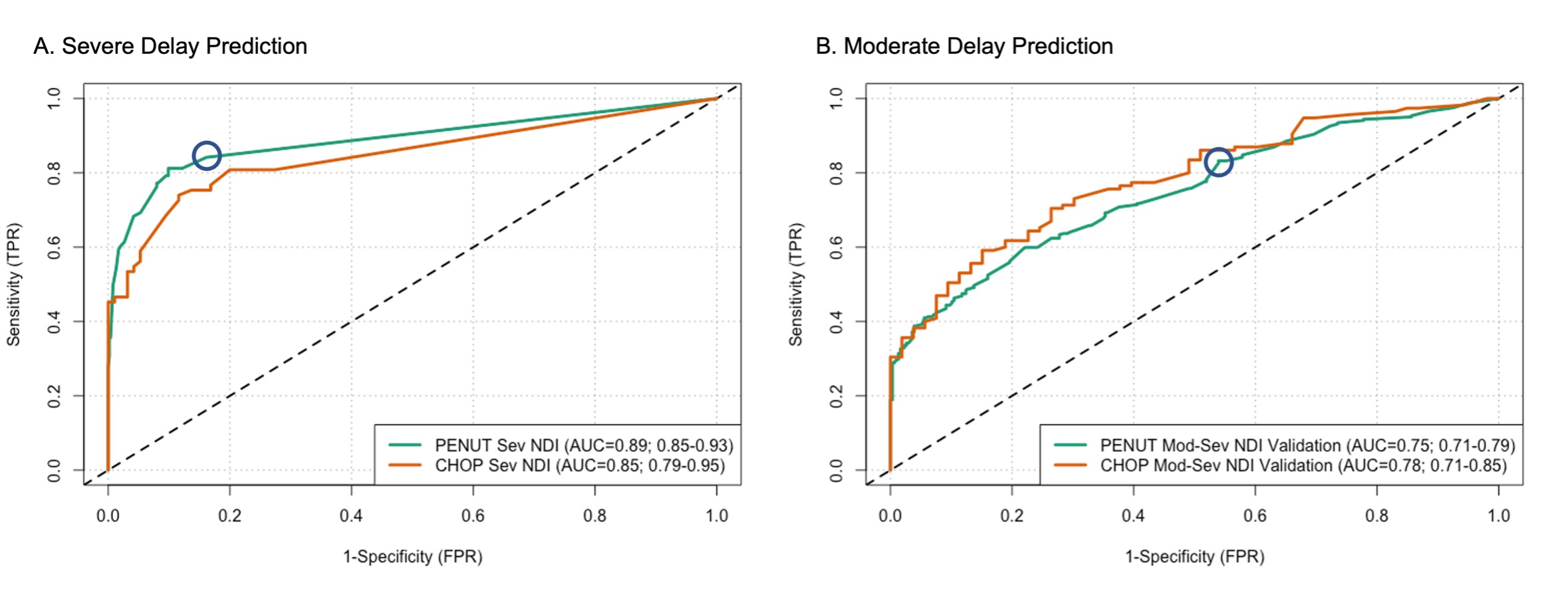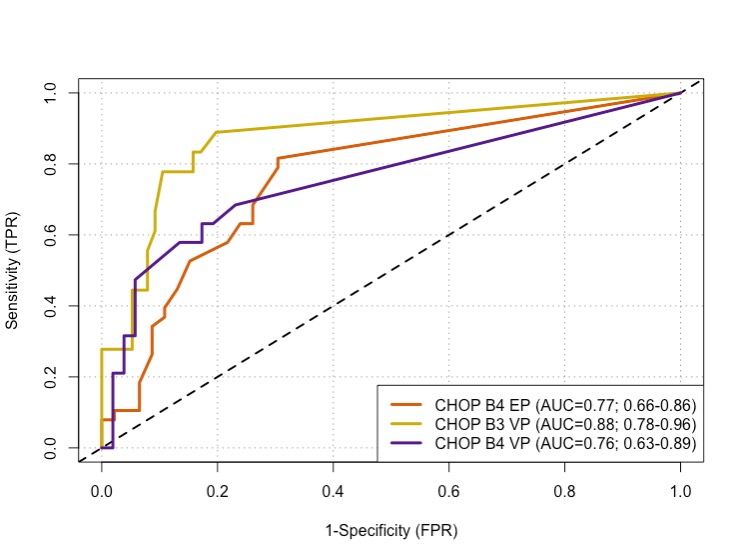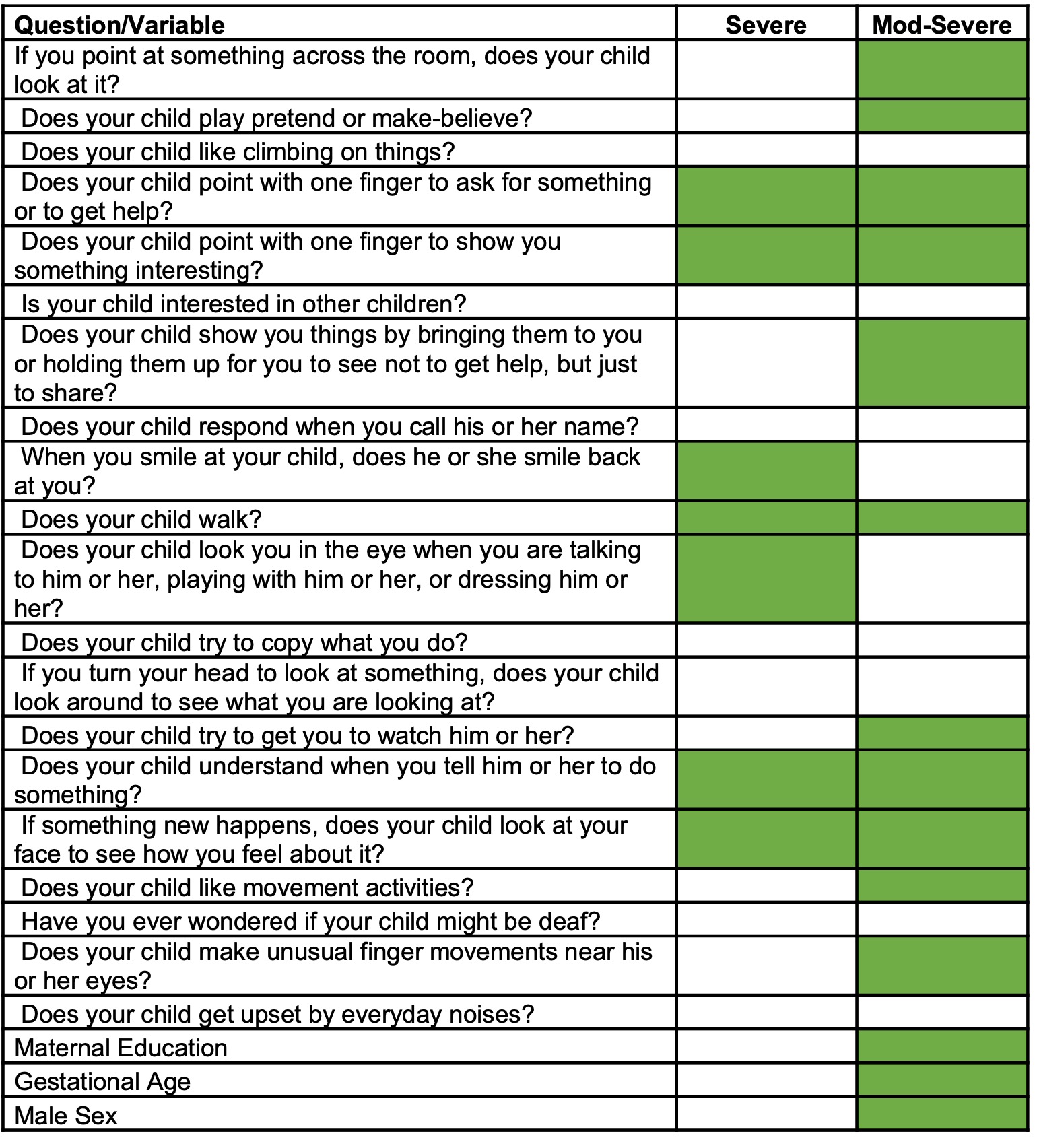Neonatal Follow-up
NICU Follow Up and Neurodevelopment 5: Impact of Parents and Social Determinants of Health
162 - Development and Validation of a Parental Questionnaire to Screen for Developmental Delays in 2-Year-Old Children who were Born Extremely Preterm
Publication Number: 162.363

Sara B. DeMauro, MD, MSCE (she/her/hers)
Associate Professor of Pediatrics
Childrens Hospital of Philadelphia and University of Pennsylvania
Philadelphia, Pennsylvania, United States
Presenting Author(s)
Background:
In-person developmental assessments are essential for children at high risk for delays in order to optimize developmental support services and assess outcomes for clinical trials. However, in-person evaluations are not always feasible. A valid screening tool to determine which children should be prioritized for follow-up is needed.
Objective:
(a) To determine whether a parental survey of standardized developmental yes/no questions derived from the Modified Checklist for Autism, Revised (MCHAT-R) can predict developmental delay on the Bayley Scales of Infant and Toddler Development, 3rd Edition (Bayley-3) in children born extremely preterm (EPT, 24-27 6/7wks gestational age (GA)) and tested at 22-26mos corrected age (CA). (b) To determine whether predictive ability is maintained for children born very preterm (VPT, 28-31 6/7wks GA) and/or tested with the Bayley-4.
Design/Methods:
We developed a prediction model using data from Preterm Erythropoietin Neuroprotection Trial (PENUT), a multi-center, prospective RCT of EPT infants (n=628 with 2yr follow-up data). Responses to the MCHAT-R questionnaire were correlated with Bayley-3 cognitive, language or motor score < 70 (severe delay) and < 85 (moderate or severe delay). LASSO regression was used to select the MCHAT-R questions most predictive of developmental delay, adjusted for maternal education, GA and sex, using 10-fold cross-validation to select the model with lowest binomial deviance. The model was validated with clinical data from Children’s Hospital of Philadelphia (CHOP) Neonatal Follow-up Program, among EPT infants (n=168), and then among VPT infants (n=94) assessed with Bayley-3, and EPT (n=84) and VPT (n=81) infants assessed with Bayley-4.
Results:
Severe developmental delay in PENUT was predicted by 7 of 20 MCHAT-R questions (Table 1). Area under the curve (AUC) in the CHOP validation cohort was 0.85 (Fig 1A). The model to predict moderate or severe delay retained 11 questions, maternal education, GA, and sex, though it was less accurate (Table 1, Fig 1B). Both models achieved >80% sensitivity, with specificity of 73% for prediction of severe delay and 43% for prediction of moderate or severe delay. AUC for prediction of severe delay was similar (0.76-0.88) in VPT and Bayley-4 cohorts (Fig 2).
Conclusion(s):
A subset of questions from the MCHAT-R may be a useful screening tool to identify former EPT/VPT children at high risk for severe developmental delay. Identification of infants at risk for moderate to severe delay is more challenging.



